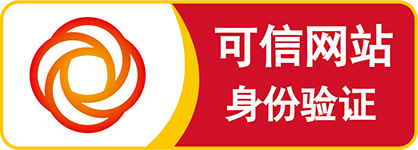2015美国注册会计《财务会计报告》模拟试题(3)
1.Which of the following statements is correct regarding the difference between the absorption costing and variable costing methods?
a. When production is less than sales, absorption costing income is greater than variable costing income.
b. When production equals sales, absorption costing income is less than variable costing income.
c. When production equals sales, absorption costing income is greater than variable costing income.
d. When production is greater than sales, absorption costing income is greater than variable costing income.
答案:D
Explanation
Choice "d" is correct. When production is greater than sales, absorption costing income is greater than variable costing income. Production in excess of sales result in increases in inventory that include capitalization of fixed product costs that are immediately expensed under variable costing. Since costs that are used in the determination of net income for variable costing are accounted for in inventory for absorption costing, absorption costing will produce higher net income than variable costing when production is greater than sales.
Choice "c" is incorrect. When production equals sales, there is no change in inventory and absorption costing and variable costing produce identical results.
Choice "b" is incorrect. When production equals sales, there is no change in inventory and absorption costing and variable costing produce identical results.
Choice "a" is incorrect. When production is less than sales, inventory declines and absorption costing produces earnings less than variable costing because fixed product costs included in inventory in prior years are charged to earnings when inventory declines. These "extra" costs were already recognized in prior periods under variable costing. As a result, absorption costing produces lower net income than variable costing when production is less than sales and inventory declines.
2.Breakeven analysis assumes that over the relevant range:
a. Unit variable costs are unchanged
b. Total fixed costs are nonlinear
c. Total costs are unchanged
d. Unit revenues are nonlinear
答案:A
Explanation
Choice "a" is correct. Breakeven analysis assumes that all variable costs and revenues are constant on a per unit basis and are linear over a relevant range. Fixed costs in total are constant.
Choice "d" is incorrect. Breakeven analysis assumes that all variable costs and revenues are constant on a per unit basis and linear over a relevant range.
Choice "c" is incorrect. Total costs do change over a relevant range. Breakeven analysis assumes that all variable costs and revenues are constant per unit and linear within a relevant range.
Choice "b" is incorrect. Total fixed costs are assumed to be constant (representing a linear relationship) over a relevant range.
3.Jago Co. has 2 products that use the same manufacturing facilities and cannot be subcontracted. Each product has sufficient orders to utilize the entire manufacturing capacity. For short-run profit maximization, Jago should manufacture the product with the:
a. Lower total variable manufacturing costs for the manufacturing capacity.
b. Greater contribution margin per hour of manufacturing capacity.
c. Lower total manufacturing costs for the manufacturing capacity.
d. Greater gross profit per hour of manufacturing capacity.
答案:B
Explanation
Choice "b" is correct. To maximize profit at full capacity, contribution margin per hour should be maximized.
Choice "c" is incorrect. To maximize profit, the sales price of the products must also be considered.
Choice "a" is incorrect. To maximize profit, the sales price of the products must also be considered.
Choice "d" is incorrect. Contribution margin is a better measure of profit maximization than gross profit because it includes all variable costs. Gross margin includes consideration of cost of goods sold, but may exclude other variable costs, such as selling, general, and administrative costs.
4.Which of the following costing methods will yield the lowest inventory value?
a. Absorption.
b. Variable.
c. Hybrid.
d. Process.
答案:B
Explanation
Choice "b" is correct. Variable costing typically produces the lowest inventory values since only variable costs are capitalized. Other methodologies of inventory accounting will account for fixed costs in inventory and result in greater values than variable costing.
Choice "a" is incorrect. Absorption costing accounts for fixed manufacturing overhead costs in inventory and produces inventory values greater than variable costing.
Choice "c" is incorrect. Hybrid costing methods may blend different inventory methodologies but would likely include valuations greater than pure direct cost approaches that only include variable costs.
Choice "d" is incorrect. Process costing methods represent a cost accumulation approach that uses any number of assumptions. Process costing will normally include fixed costs in the valuation of inventory and would thereby result in higher amounts than direct costing approaches.
5.Many firms have made significant strides in reducing their inventories. Which of the following would be least likely to encourage managers to reduce inventory?
a. Instituting a charge against the budget for managers based on the size of the inventory.
b. Using throughput costing.
c. Using absorption costing.
d. Using variable costing.
答案:C
Explanation
Choice "c" is correct. Absorption costing (as the name implies) absorbs fixed overhead cost into the units produced. Those units placed in inventory can absorb some of the manager\'s cost and raise profits. This method encourages larger inventories.
Choice "d" is incorrect. Variable costing places only variable costs into products and all fixed overhead is charged to cost of goods sold. This does not give an incentive to overproduce.
Choice "b" is incorrect. Throughput costing is an inventory costing method that places only variable direct material in inventoriable cost. All other costs are treated as costs of the period. This also does not give an incentive to overproduce.
Choice "a" is incorrect. Clearly, putting a charge against the budget for inventory will discourage excess inventory.
©2013-2023 北京原驰蜡象教育科技有限公司 All Rights Reserved
违法和不良信息举报电话:010-52413720 | 举报邮箱:sdjgjubao@sunlands.com | 网上有害信息举报专区
营业执照 | 经营许可证编号:京ICP证140312号 | 京ICP备14002947号 | 京公网安备11010502031798 | 京网文 【2018】 7437-597号

关注尚德机构官网

下载尚德机构APP


